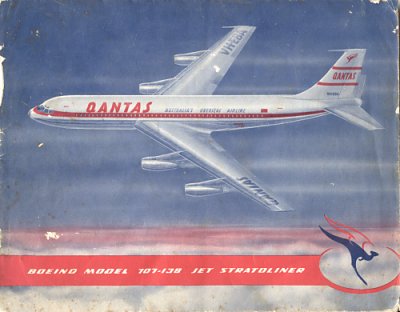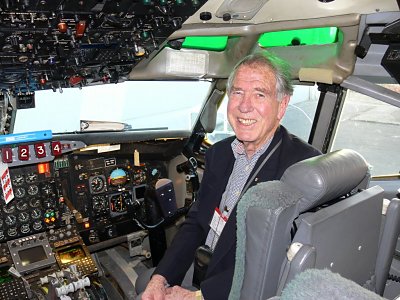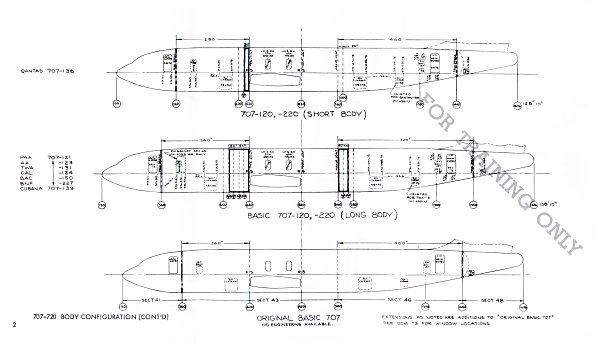THE LONG AND
THE SHORT
OF
"THE QANTAS BOEING"
|
Dr
Ron Yates on the flight deck of VH-XBA at Southend on 6 November
2006. Ron Yates was the first aeronautical engineer employed
by Qantas. His job interview was with none other than Arthur Baird,
the doyen of Qantas engineers. When asked by the great man; "What
sort of a tool box do you have?" Ron Yates replied; "I don't
have a tool box. I have a slide rule." Although he didn't get
the job as an engineer, he went on to greater things. When it came
time for Qantas to enter the jet age, it was under Ron Yates' stewardship
that the company made this great leap. While stationed in Seattle,
he flew in the Dash 80 prototype and became intimately familiar with
the aeroplane, negotiating the specification of the Qantas 707 on
equal terms with the engineers at Boeing. |
AIRCRAFT OVERALL LENGTH COMPARISON
| Model | Length (Imperial) | Length (Metric) |
| 367-80 | 127 feet 10 inches | 38.96 metres |
| 707-120 | 144 feet 6 inches | 44.01 metres |
| 707-138 | 134 feet 6 inches (Note 1) | 41.00 metres |
| 707-138B | 135 feet 1 inch (Note 2) | 41.17 metres |
| 720 | 136 feet 2 inches | 41.50 metres |
| KC-135A | 136 feet 3 inches | 41.53 metres |
| Note 1 | A Boeing publication on the 707-138 dated May 1958 shows an Overall Length of 134 feet 6 inches and a Body Length of 128 feet 10 inches (nose to tailcone, excluding tail surface overhang). Ron Yates advises that in all discussions of aircraft length, he always used the Body Length of 128 feet 10 inches. |
| Note 2 | Although the Body Length did not change with the 138B conversion, the Overall Length did increase by 7 inches by virtue of the "overhang" of the extended fin and tailplane. This figure is sourced from the Qantas 707-138B Operations Manual. |
| Source | Unless shown otherwise, the dimensions quoted in the above table are sourced from "The Boeing 707 & 720" (Air-Britain 1972) and presumably originate from Boeing. |
| This drawing appears in a Boeing Manufacturing Training publication titled "707 Reference Guide" first published in May 1958 and reprinted in October 1960. Click on the drawing for a larger view with explanatory notes. |



